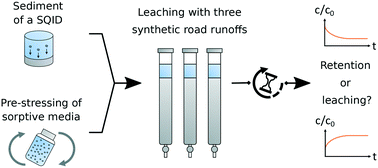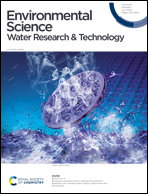Leaching potential of heavy metals from road-deposited sediment and sorptive media during dry periods in storm water quality improvement devices†
Abstract
Storm water quality improvement devices (SQIDs) mitigate the deteriorating effects of traffic-related contaminants, especially heavy metals. Many SQIDs consist of a settling tank to remove road-deposited sediments in the first treatment stage and dissolved heavy metals are removed by sorptive filtration in the second treatment stage. SQIDs are commonly operated under permanent impounding, resulting in high hydraulic retention times. In this study, we evaluate the leaching potential during dry periods from road-deposited sediment trapped in the settling stage and from three different sorptive media of SQIDs. For this purpose, a new experimental procedure was developed using quiescent batch leaching tests. The sorptive media were pre-stressed with realistic Cu and Zn loads. Three different synthetic road runoffs were used to evaluate the influence of de-icing salts and dissolved organic matter. Strong leaching of heavy metals from road-deposited sediment was observed. In contrast to previous studies on the leaching of Zn from tire wear particles, the process showed limitation by saturation or precipitation after 24 h. Furthermore, no leaching from pre-stressed sorptive media was observed. This highlights that under in situ conditions, leaching from sorptive media is rather unlikely. However, design and operation of SQIDs should consider the leaching potential of road-deposited sediments.



 Please wait while we load your content...
Please wait while we load your content...